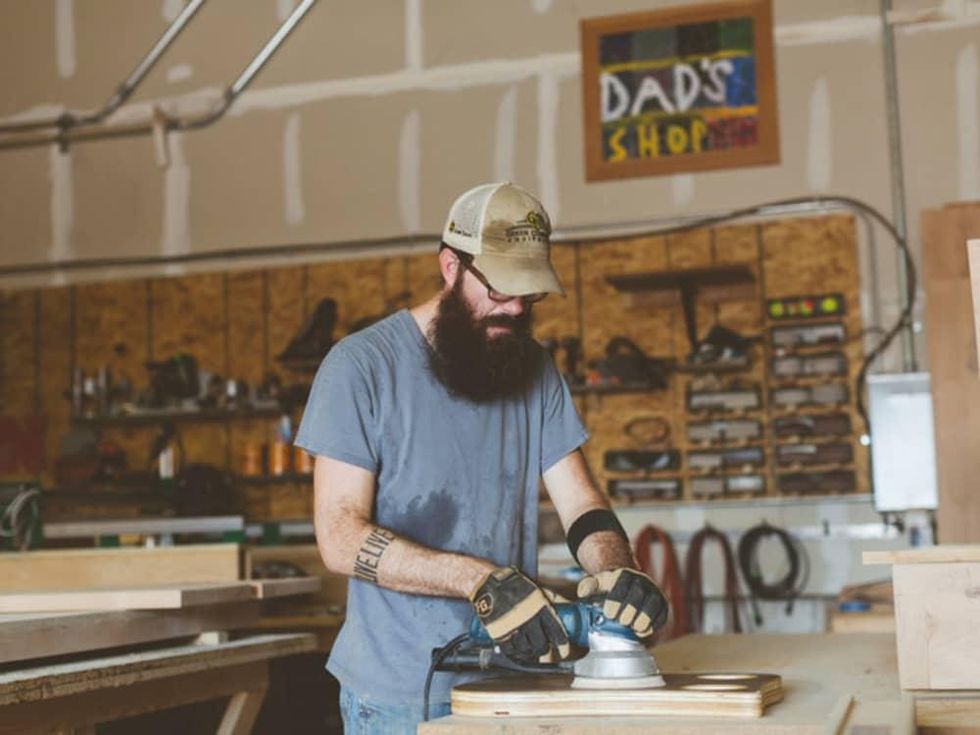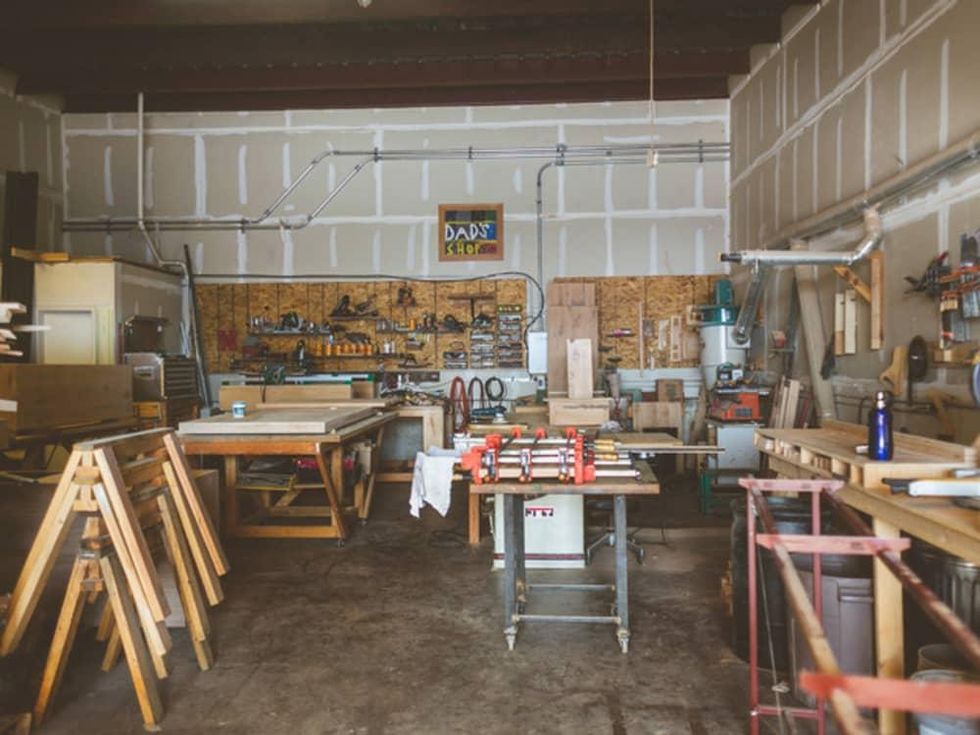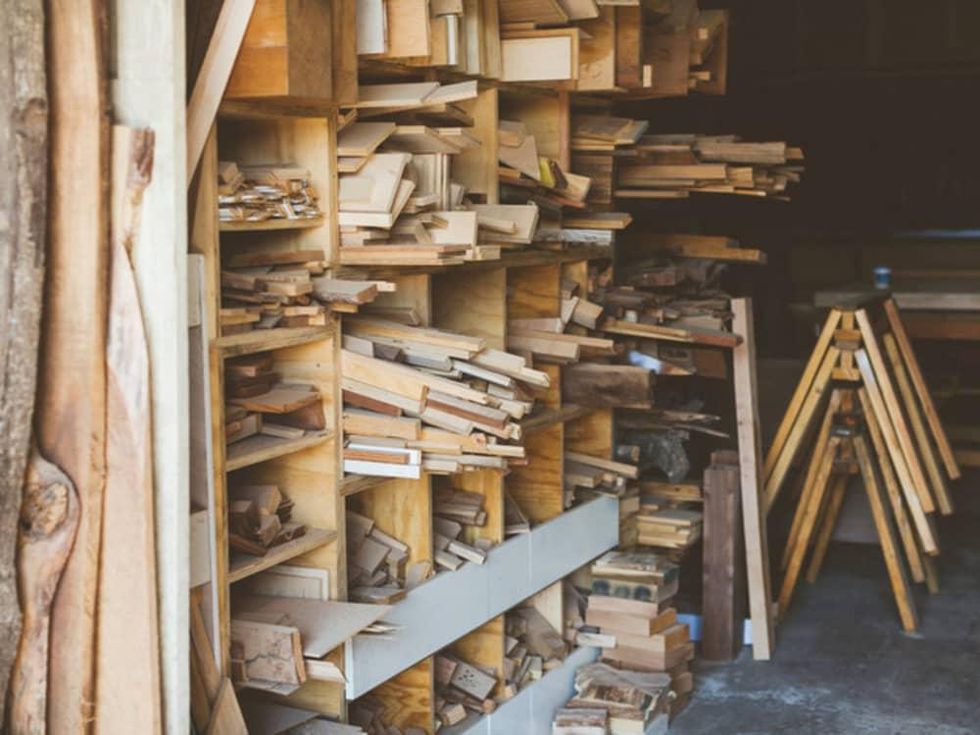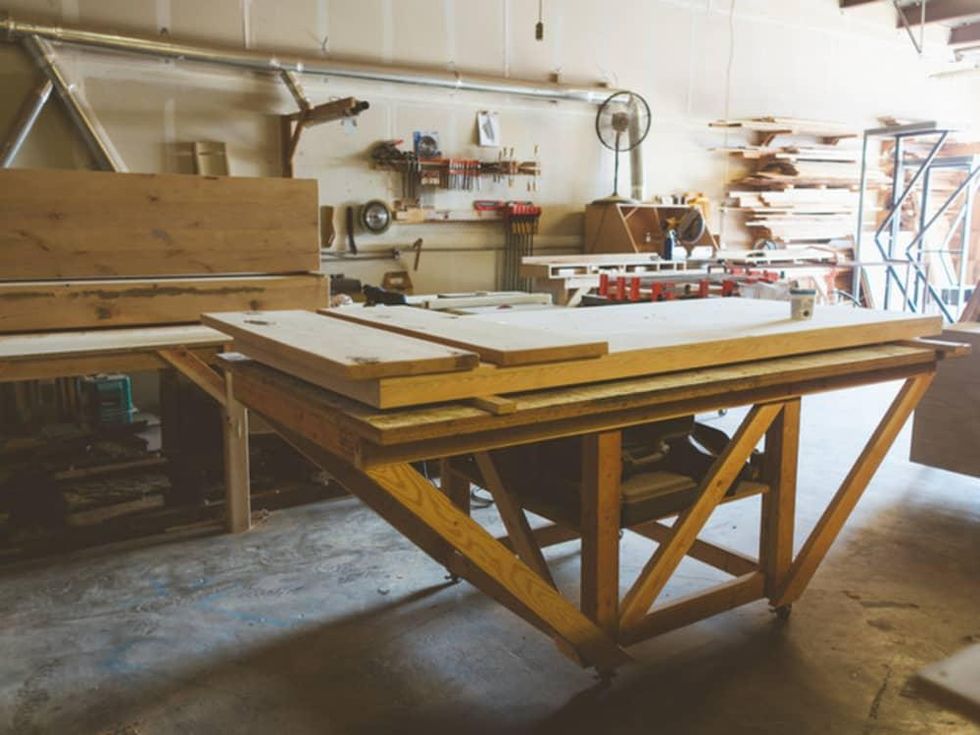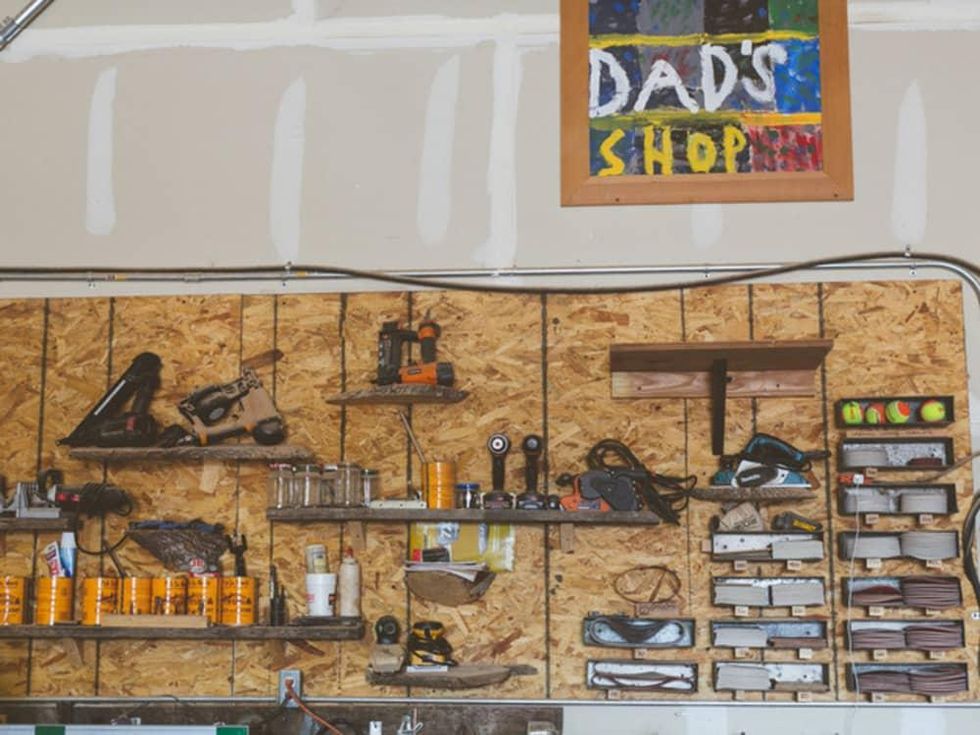Austin Studio Tour
Texas craftsman takes us inside his inspirational Austin workshop

For the past four years, Elijah Godfrey of Second Chance Custom has been designing and building custom furniture from reclaimed, rescued, repurposed, sustainable, and locally sourced materials. He invited us into his Austin workshop and gave us a peek at what inspires his work and how he keeps his materials and tools organized.
Godfrey got started in his craft at a young age. “I’ve always been around power tools, whether it was helping my dad out on the farm or building cabins with my papa, or grandpa, in Colorado,” he says. Prior to building furniture, he was a superintendent with a home builder and for a few years did remodeling and handyman work on his own.
Sometimes he goes searching for the right materials for a job, and other times he finds a material first and designs a piece around it. He often jots down ideas and sketches in his sketch pad or iPad or even on a napkin.
Since starting in a 650-square-foot shop, Godfrey has moved three times, adding more space each time. The current workshop is about 1,500 square feet and is divided into three main areas.
Renovate Your Space Into a Studio
One area is for Godfrey’s metalwork, where he has bins and organized stacks of scrap metal and full-length pieces of steel. His chop saw sits along the longest wall and a welding table sits out away from the wall, separating the metal working area from the woodworking area.
The woodworking area takes up the most space in the workshop. “That entire area is basically laid out around my table saw and outfeed table,” Godfrey says. “All around it are various stationary woodworking tools, all connected by my dust-collection system.”
The third main area includes Godfrey’s CNC machine. “I have a 5-by-10 CNC table where I do all my engraving and other wood engraving work,” he says.
Though custom projects keep him busy most of the time, Godfrey loves it when clients come to him and say things like, “We love your stuff, do your thing.” He also loves collaborating with clients on projects, from design to materials selection.
Godfrey is known for his butcher-block cutting boards, which are all made out of “fall-off wood.” He built a shelving unit to hold what he calls his fall-off pieces from past projects.
“I don’t really throw anything away, unless it absolutely can’t be used for some project,” he says. “I keep that bin organized as best I can by sorting my hardwoods and softwoods and ply fall-offs.”
Sometimes Godfrey favors materials not typically used in his craft. “I recently built a dining table out of cottonwood, which is not a popular furniture-making wood. It is a soft hardwood, and not a lot of furniture makers like to use it because it has a special and long finishing process,” he says. “However, I found this to be one of my favorite materials to work with.”
Godfrey tries to source materials locally as much as possible. “I do my best to reduce the global footprint that I leave in my business. From buying and sourcing the materials for my projects to my clients and fans of my art and work, much of what I do is locally based,” he says.
A friend who runs a sawmill just outside Austin is his main source for wood slabs and scraps. Godfrey will often go and pick through the stacks and piles and shelves and will even occasionally find something useful in the chipper pile. He isn’t afraid to dumpster dive and is always looking for discarded materials on the side of the road.
One of his most exciting projects was a dining table he built for a couple who wanted to commemorate their time in Texas, as one of them was from Australia and the other from Scotland. “I sourced some unique local cottonwood from my wood guy in Georgetown and built them a beautiful piece called the McGregor,” Godfrey says.
Another favorite project of his was one he did in loblolly pine, which came from the fallen and cleared trees of the Bastrop fires of 2011. He used the wood to make beer tap handles for a local brewery.
Bring in Warmth and Character With Reclaimed Wood
For anyone interested in learning more woodworking skills, Godfrey’s advice is to try to find a local craftsman that will allow you to shadow him or her, take some classes at Woodcraft, or watch instructional videos online. But mostly, keep creating.
“I try to keep things as organized as possible. Sometimes when things get busy and chaotic it becomes a little difficult to keep up with things, but I set aside afternoons and days to reorganize and clean up,” Godfrey says.
He says his ultimate goal for his workspace “is to have a place where clients can come, consult about their project, pick out their own wood, and see where it’s built.”

